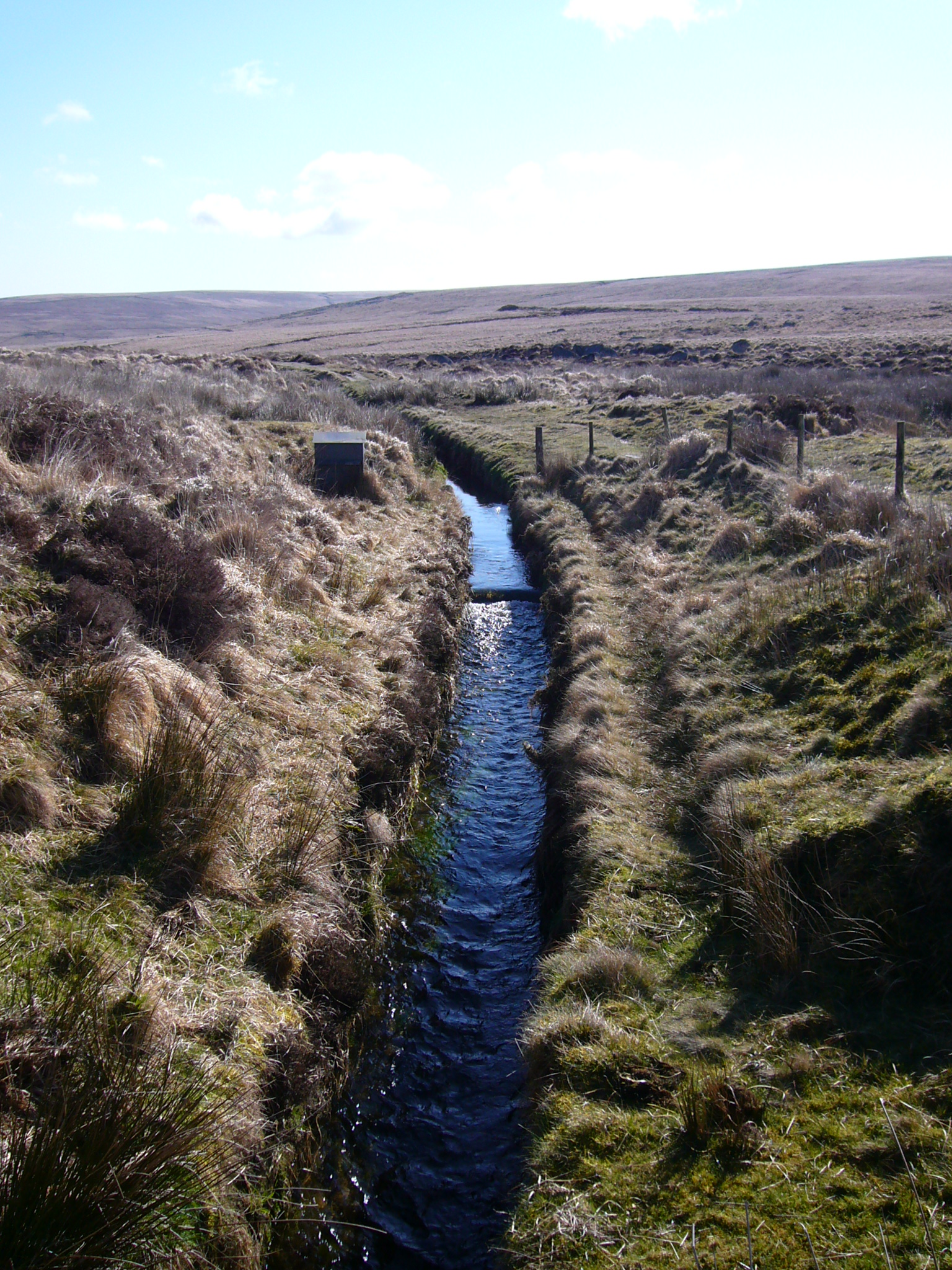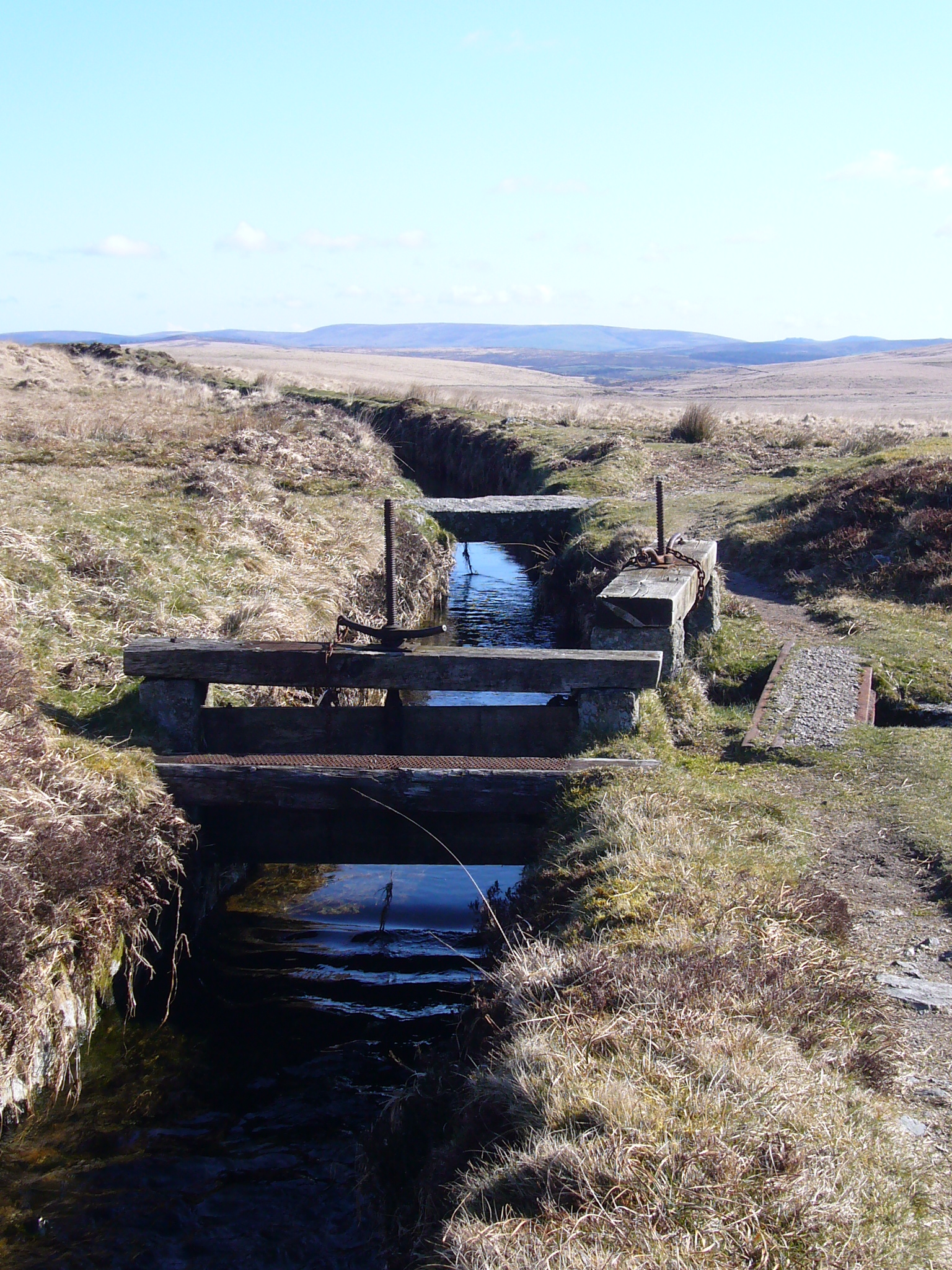Leat on:
[Wikipedia]
[Google]
[Amazon]
 A leat (; also lete or leet, or millstream) is the name, common in the south and west of England and in Wales, for an artificial
A leat (; also lete or leet, or millstream) is the name, common in the south and west of England and in Wales, for an artificial

 Leats were built to work
Leats were built to work

 A leat (; also lete or leet, or millstream) is the name, common in the south and west of England and in Wales, for an artificial
A leat (; also lete or leet, or millstream) is the name, common in the south and west of England and in Wales, for an artificial watercourse
A stream is a continuous body of water, body of surface water Current (stream), flowing within the stream bed, bed and bank (geography), banks of a channel (geography), channel. Depending on its location or certain characteristics, a strea ...
or aqueduct dug into the ground, especially one supplying water to a watermill
A watermill or water mill is a mill that uses hydropower. It is a structure that uses a water wheel or water turbine to drive a mechanical process such as mill (grinding), milling (grinding), rolling, or hammering. Such processes are needed in ...
or its mill pond. Other common uses for leats include delivery of water for hydraulic mining
Hydraulic mining is a form of mining that uses high-pressure jets of water to dislodge rock material or move sediment.Paul W. Thrush, ''A Dictionary of Mining, Mineral, and Related Terms'', US Bureau of Mines, 1968, p.560. In the placer mining of ...
and mineral concentration, for irrigation
Irrigation (also referred to as watering of plants) is the practice of applying controlled amounts of water to land to help grow crops, landscape plants, and lawns. Irrigation has been a key aspect of agriculture for over 5,000 years and has bee ...
, to serve a dye works or other industrial plant, and provision of drinking water to a farm or household or as a catchment cut-off to improve the yield of a reservoir
A reservoir (; ) is an enlarged lake behind a dam, usually built to water storage, store fresh water, often doubling for hydroelectric power generation.
Reservoirs are created by controlling a watercourse that drains an existing body of wa ...
.
According to the ''Oxford English Dictionary
The ''Oxford English Dictionary'' (''OED'') is the principal historical dictionary of the English language, published by Oxford University Press (OUP), a University of Oxford publishing house. The dictionary, which published its first editio ...
'', ''leat'' is cognate
In historical linguistics, cognates or lexical cognates are sets of words that have been inherited in direct descent from an etymological ancestor in a common parent language.
Because language change can have radical effects on both the s ...
with ''let'' in the sense of "allow to pass through". Other names for the same thing include ''fleam'' (probably a leat supplying water to a mill that did not have a millpool). In parts of northern England, for example around Sheffield, the equivalent word is ''goit''. In southern England, a leat used to supply water for water-meadow irrigation is often called a ''carrier'', ''top carrier'', or ''main''.
Design and functions
Water mills
Leats generally start some distance (a few hundred metres/yards, or perhaps several miles/kilometres) above the mill or other destination, where an offtake or sluice gate diverts a proportion of the water from ariver
A river is a natural stream of fresh water that flows on land or inside Subterranean river, caves towards another body of water at a lower elevation, such as an ocean, lake, or another river. A river may run dry before reaching the end of ...
or stream
A stream is a continuous body of water, body of surface water Current (stream), flowing within the stream bed, bed and bank (geography), banks of a channel (geography), channel. Depending on its location or certain characteristics, a strea ...
. A weir
A weir or low-head dam is a barrier across the width of a river that alters the flow characteristics of water and usually results in a change in the height of the water level. Weirs are also used to control the flow of water for outlets of l ...
in the source stream often serves to provide a reservoir of water adequate for diversion. The leat then runs along the edge or side of the valley, at a shallower slope than the main stream. The gradient, together with the quality of the wetted surface of the leat, determines the flow rate. The flow rate may be calculated using the Manning formula. By the time it arrives at the water mill
A watermill or water mill is a mill that uses hydropower. It is a structure that uses a water wheel or water turbine to drive a mechanical process such as milling (grinding), rolling, or hammering. Such processes are needed in the production ...
the difference in levels between the leat and the main stream is great enough to provide a useful head
A head is the part of an organism which usually includes the ears, brain, forehead, cheeks, chin, eyes, nose, and mouth, each of which aid in various sensory functions such as sight, hearing, smell, and taste. Some very simple ani ...
of water – several metres (perhaps 5 to 15 feet) for a watermill, or a metre or less (perhaps one to four feet) for the controlled irrigation of a water-meadow.
Water supply
Leats are used to increase the yield of a reservoir by trapping streams in nearby catchments by means of a contour leat. This captures part or all of the stream flow and transports it along the contour to the reservoir. Such leats are common around reservoirs in the uplands of Wales.Mining

 Leats were built to work
Leats were built to work lead
Lead () is a chemical element; it has Chemical symbol, symbol Pb (from Latin ) and atomic number 82. It is a Heavy metal (elements), heavy metal that is density, denser than most common materials. Lead is Mohs scale, soft and Ductility, malleabl ...
, tin and silver
Silver is a chemical element; it has Symbol (chemistry), symbol Ag () and atomic number 47. A soft, whitish-gray, lustrous transition metal, it exhibits the highest electrical conductivity, thermal conductivity, and reflectivity of any metal. ...
ores in mining areas of Wales, Cornwall
Cornwall (; or ) is a Ceremonial counties of England, ceremonial county in South West England. It is also one of the Celtic nations and the homeland of the Cornish people. The county is bordered by the Atlantic Ocean to the north and west, ...
, Devon
Devon ( ; historically also known as Devonshire , ) is a ceremonial county in South West England. It is bordered by the Bristol Channel to the north, Somerset and Dorset to the east, the English Channel to the south, and Cornwall to the west ...
, the Pennines
The Pennines (), also known as the Pennine Chain or Pennine Hills, are a range of highland, uplands mainly located in Northern England. Commonly described as the "Vertebral column, backbone of England" because of its length and position, the ra ...
and the Leadhills
Leadhills, originally settled for the accommodation of miners, is a village in South Lanarkshire, Scotland, WSW of Elvanfoot. The population in 1901 was 835. It was originally known as Waterhead.
It is the second highest village in Scotland, ...
/Wanlockhead
Wanlockhead is a village in Dumfries and Galloway, Scotland, nestling in the Lowther Hills and south of Leadhills at the head of the Mennock Pass, which forms part of the Southern Uplands. It is Scotland's highest village, the village centre b ...
area of Southern Scotland from the 17th century onwards. They were used to supply water for hushing mineral deposits, washing ore and powering mills.
Use in Roman times
Leats were also used extensively by the Romans, and can still be seen at many sites, such as the Dolaucothi Gold Mines. They used the aqueducts to prospect for ores by sluicing away the overburden of soil to reveal the bedrock in a method known as hushing. They could then attack the ore veins by fire-setting, quench with water from a tank above the workings, and remove the debris with waves of water, a method still used inhydraulic mining
Hydraulic mining is a form of mining that uses high-pressure jets of water to dislodge rock material or move sediment.Paul W. Thrush, ''A Dictionary of Mining, Mineral, and Related Terms'', US Bureau of Mines, 1968, p.560. In the placer mining of ...
. The water supply could then be used for washing the ore after crushing by simple machines also driven by water.
The Romans also used them for supplying water to the bath-houses or thermae
In ancient Rome, (from Greek , "hot") and (from Greek ) were facilities for bathing. usually refers to the large Roman Empire, imperial public bath, bath complexes, while were smaller-scale facilities, public or private, that existed i ...
and to drive vertical water-wheels.

Dartmoor
There are many leats on Dartmoor, mostly constructed to provide power for mining activities, although some were also sources of drinking water. The courses of many Dartmoor leats may still be followed.Hawkings, D.J. (1987) ''Water from the moor'', Devon, Provides a full history of the leats which supplied Plymouth, England. Many such leats on the moor are marked on the 1:50000 and 1:25000Ordnance Survey
The Ordnance Survey (OS) is the national mapping agency for Great Britain. The agency's name indicates its original military purpose (see Artillery, ordnance and surveying), which was to map Scotland in the wake of the Jacobite rising of ...
maps, such as that serving the now-defunct Vitifer mine near the Warren House Inn. Notable leats include:
* Drake's Leat, constructed in 1591 under the management of Sir Francis Drake
Sir Francis Drake ( 1540 – 28 January 1596) was an English Exploration, explorer and privateer best known for making the Francis Drake's circumnavigation, second circumnavigation of the world in a single expedition between 1577 and 1580 (bein ...
, as an agent of the Corporation of Plymouth, to carry water from Dartmoor to Plymouth
Plymouth ( ) is a port city status in the United Kingdom, city and unitary authority in Devon, South West England. It is located on Devon's south coast between the rivers River Plym, Plym and River Tamar, Tamar, about southwest of Exeter and ...
.
* Devonport Leat constructed in the late 18th century to carry water to the expanding naval dockyard at Devonport (now a part of Plymouth).
See also
* Acequia * Flume * '' Kunstgraben'' *Mill race
A mill race, millrace or millrun, mill lade (Scotland) or mill leat (Southwest England) is the current of water that turns a water wheel, or the channel ( sluice) conducting water to or from a water wheel. Compared with the broad waters of a m ...
* Penstock
* Roman aqueduct
* Roman engineering
* Roman mining
References
External links
{{Rivers, streams and springs Aqueducts in the United Kingdom History of mining Hydraulic engineering Water management in mining cs:Náhon nrm:Bieu